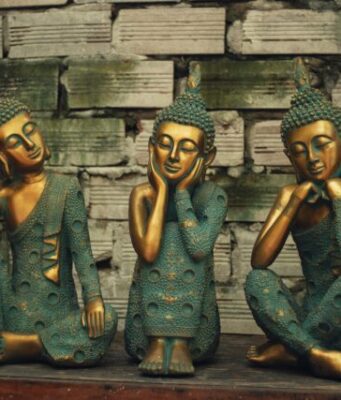Rock art painting showing a human figure collecting plants. Credit: The Archaeological Mission in the Sahara. Sapienza University of Rome.
A team of international scientists, led by the University of Bristol, has uncovered the earliest direct evidence of humans processing...
The city's acropolis is barely visible during a cloudy day on the Thessalian plains. Credit: SIA/EFAK/YPPOA
An international research team at the Department of Historical Studies, University of Gothenburg, is exploring the remains of an ancient city in central Greece....
Discoveries indicate mass fishing and therefore a semi-permanent settlement.Credit: Arne Sjöström
Six years ago divers discovered the oldest known stationary fish traps in northern Europe off the coast of southern Sweden. Since then, researchers at Lund University in Sweden have...
Dinosaur skin impression on rock.Credit: Víctor Fondevilla/UAB
Researchers from the Universitat Autònoma de Barcelona (UAB) in collaboration with the Institut Català de Paleontologia Miquel Crusafont (ICP), have discovered in Vallcebre (Barcelona) an impression fossil with the surface of the skin...
Fossil bones from the skull of Bothriolepis rex and a line drawing of the head viewed from above. The large, thick bones create an armor with a single opening for the eyes. The mouth is on the lower surface...
Archaeologists have created a new database from the teeth of prehistoric humans found at ancient burial sites in Britain and Ireland that tell us a lot about their climate, their diet and even how far they may have travelled. In...
A mirror discovered in the tomb of a Greek warrior in southwest Greece refers to a scene of a goddess holding a mirror in one of four gold rings unearthed in the excavation by a team of UC researchers.Credit:...
ANU PhD student Yuzhi Hu with a 3D print of the 400 million year old fish fossil that is six times the size of the specimen. Credit: Australian National University
Three-dimensional prints of a 400 million year old fish...
The researchers speculated that proteins might survive better if they were stuck onto solid surfaces, and so they tested the theory with the support of computational scientists, who modeled the bindings of proteins in ostrich eggshells.Credit: Matthew J Collins
Scientists...
A detail of an image from page 4 of the Grolier Codex with red underpainting visible.Photo: Justin Kerr
Brown University’s Stephen Houston and a team of leading researchers in anthropology and Maya archeology methodically verify the authenticity of the oldest...
Ötzi's axe.Credit: © South Tyrol Museum of Archaeology
The copper used to make Ötzi's axe blade did not come from the Alpine region as had previously been supposed, but from ore mined in southern Tuscany. Ötzi was probably not involved...


















